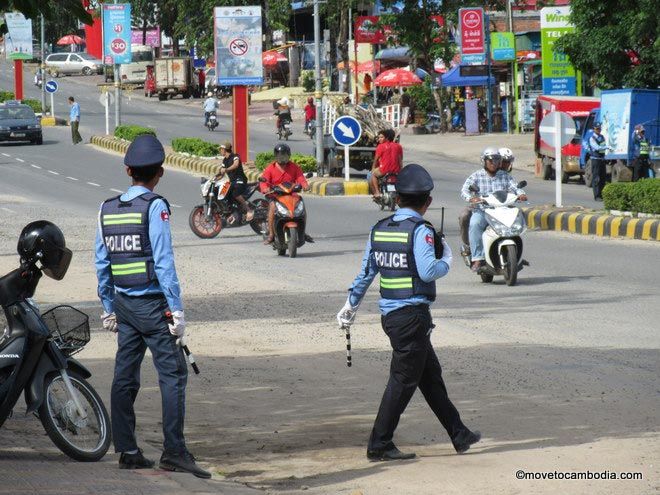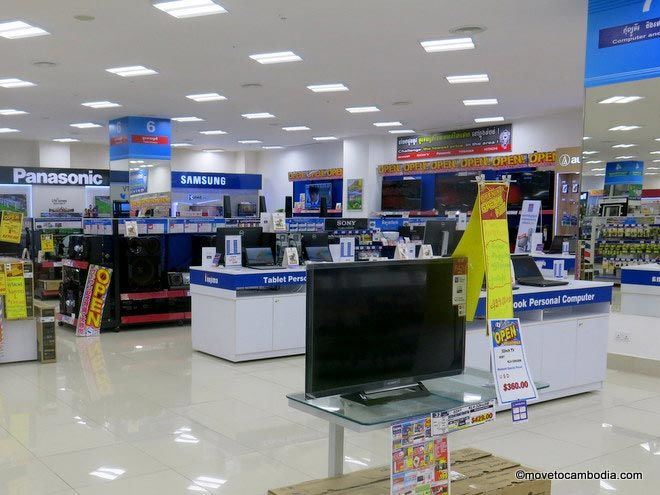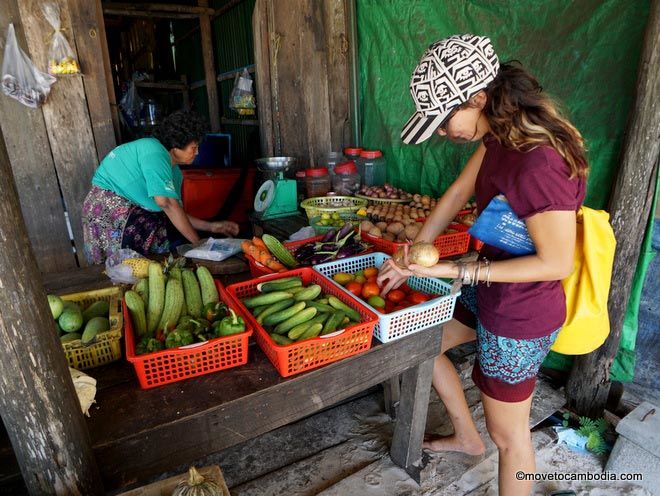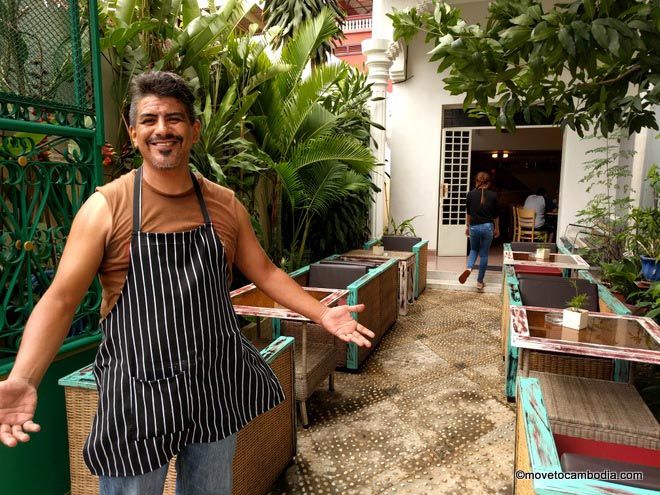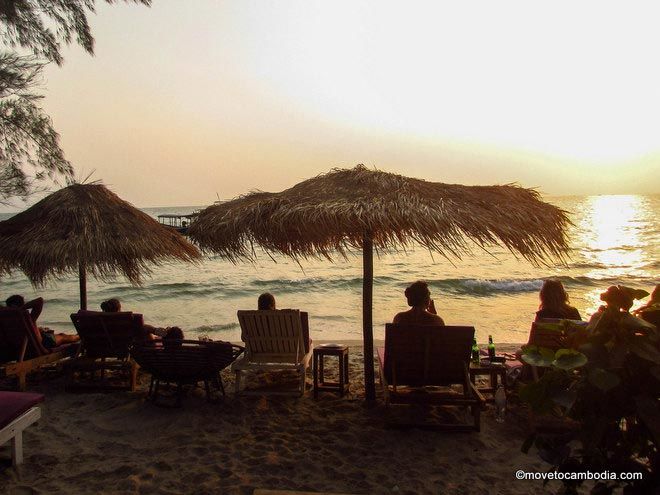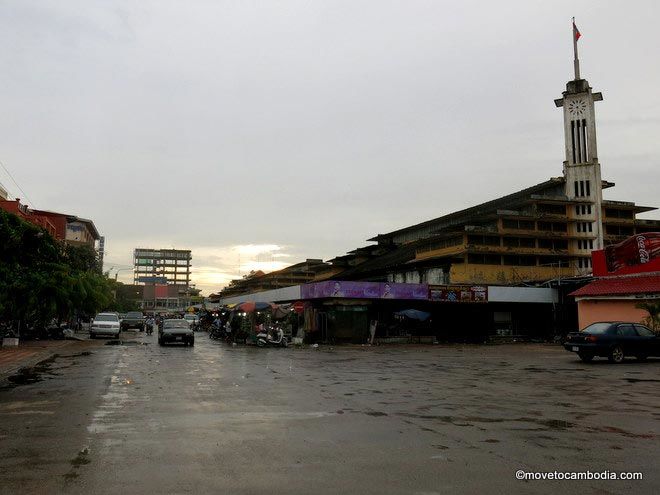After much diligence and hard work (nom nom nom) I’ve put together a bunch of new Phnom Penh restaurant reviews for you. They aren’t all new restaurants — although some of them are — but the restaurants are either new to me, or ones I’ve been meaning to review for ages. If you have suggestions of new restaurants in Phnom Penh that you’d like to see reviewed, let us know in the comments!
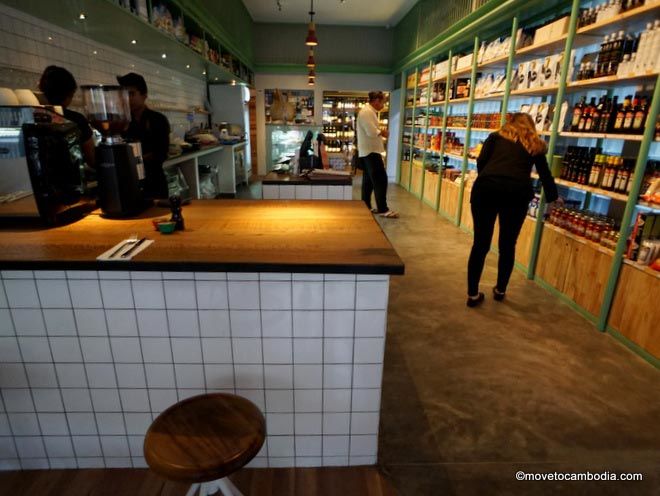
The Providore is more than just a high-end deli, it’s also a cafe!
The Providore
The Providore is a new deli with attached cafe that serves up simple dishes meant to highlight the imported gourmet ingredients and coffee available at the deli. The breakfasts, from eggs and chorizo to chocolate French toast with maple-infused mascarpone get good reviews, as do their lunch sandwiches. But the standout on the menu are the platters, priced at just $10. There are French, Spanish, and Italian platters, each featuring charcuterie, cheese, and accompaniments from their respective countries — the Spanish one is excellent and very good value. Finish it off with a glass of draft Stella (it’s the only place in Phnom Penh you can get it) or a bottle of wine from their extensive collection.
Open daily, 7 a..m. to 8 p.m.
67 Sothearos Blvd, Tonle Bassac, Phnom Penh
T: 095 907 879
theprovidorecambodia.com

Tonkotsu ramen is the specialty of O-San Ramen.
Japanese Noodle Bar O-San
Japanese Noodle Bar O-San serves up several types of ramen and tsukemen ramen — the latter is cold noodles served with an intense porky gravy for dipping that is sort of ramen deconstructed, and perfect for hot days. The specialty of the place is tonkotsu ramen, that features a rich, milky pork bone broth that is the specialty of Kyushu in Japan where the chef hails from. We tried the special tonkotsu which could have been billed “heart attack in a bowl” — it was an enormous portion of the previously mentioned tsukemen pork gravy that is most certainly best enjoyed in small quantities. The small restaurant is casual but authentic and popular with Japanese expats. The service can be spotty, but if you’re a ramen fan it’s definitely worth a visit.
27B Street 294, BKK1, Phnom Penh
T: 097 9327 067
o-san.com/phnom-penh
Sura
This decidedly-not-hip Korean restaurant seems out of place on trendy Streets 29 and 308. The menu is traditional Korean fare, with (relatively) inexpensive soups and stews, braised meats and seafood, and pricier meat menu that can be grilled at the table. But the highlight is what’s not on the menu — Korean fried chicken and beer, a combination that is all the rage in Korea and served and specialty restaurants called “hofs.” At Sura you can get an entire chicken that will satisfy several people for $15. The fried chicken comes in four styles: original, spicy, soy sauce, and garlic. Served with a side of sweet marinated radish to cut through the spice, the spicy fried chicken is deliciously fiery. Pitchers of Angkor beer make the perfect accompaniment for $3.
30A Street 29, Tonle Bassac, Phnom Penh
T: 023 993 733; 077 848 707; 086 500 500
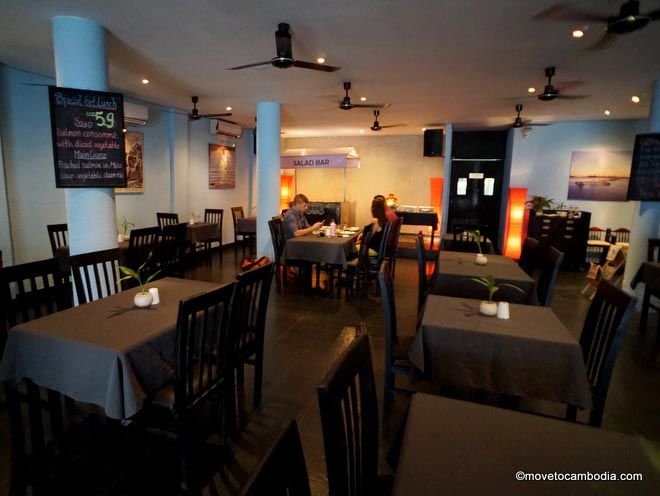
You wouldn’t know it by this photo, but Salmon House is packed out every lunchtime.
The Salmon House
Salmon House is an amazing find for salmon lovers on a budget. The restaurant is run by a salmon importer who wanted to showcase the versatility and deliciousness of salmon. They have a $2.50 lunch menu that includes several types of salmon served with rice, and access to the all-you-can eat salad bar. There’s a more elaborate two-course $5.90 lunch option that changes daily. The ala carte menu is more expensive but still good value; a large plate of salmon sashimi is $5, and a platter of three types smoked salmon is $7 (although it’s served without bread or crackers). The preparation is clearly aimed at a Cambodian audience, and some Westerners may be offended by decisions like pairing smoked salmon with a honey mustard sauce, but whatever they are doing seems to be working, because every day the place is packed.
Open daily, 11 a.m. to 11 p.m.
Street 266 behind Pencil, Phnom Penh
T: 012 961 662; 061 221 113
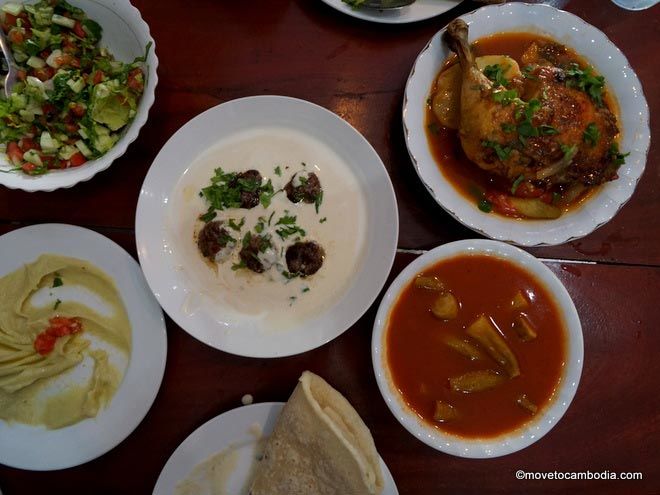
For a true taste of Middle-Eastern home cooking, head to I.R.F.
I.R.F. Restaurant
I.R.F. Restaurant, also called ‘Taste of the Middle East’ is a small, family-run restaurant that serves up home-style Iraqi cuisine. With the matriarch of the family in the kitchen and her teenage sons acting as waiters, it’s easy to feel like you’re getting a real Iraqi home-cooked meal! Middle Eastern favorites including falafel, shawarma, and kebabs, but also lesser-known Iraqi specialities. Maqluba is rice and eggplant casserole with lamb or chicken baked and served upside-down. Kofta are meatballs, here served in two variations, one in a thick yogurt sauce, another cooked with tomatoes. Both are delicious, and like everything at I.R.F., are relatively inexpensive — most dishes are priced between $3 and $7. Flatbread and dips, including baba ghanoush and hummus are a nice addition to the meal. Finish it off with a delicate middle eastern dessert, dripping with honey and chopped pistachio nuts.
I.R.F. Restaurant
35Eo Street 19 (near Street 118) Daun Penh, Phnom Penh
T: 098 713 443; 012 452 314
facebook.com/tasteofthemideastphnompenh
